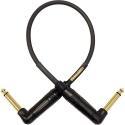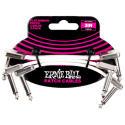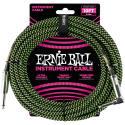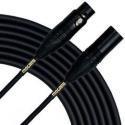Speaker Cable vs Instrument Cable - Yes They're Different
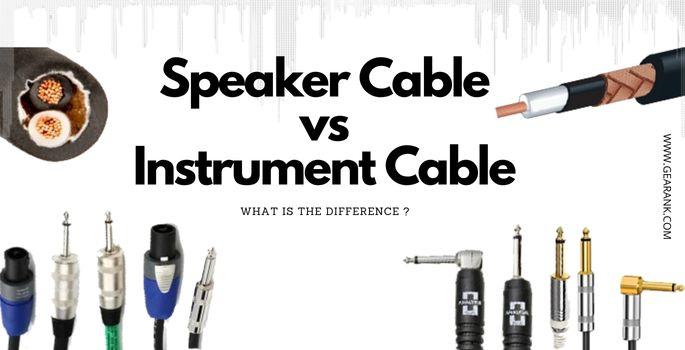
Amps, speakers, and musical instruments need specific types of cables. So to get your musical gear working, you need to be aware of the differences between a speaker cable vs instrument cable.
While these two cables may look similar, there are important differences. And not knowing which is which can result in poor sound quality. Worse, you can damage your gear.
Here you'll learn how to distinguish between the two cables and understand the use of each cable type.
What Exactly are The Key Differences Between A Speaker Cable And An Instrument Cable?
The differences aren't immediately obvious. Both have identical-looking cable jackets and ¼-inch TS connectors. The difference lies in their construction and design.
An instrument cable (like a guitar cable) has a thin copper core coated with polyester or rubber. It can carry the signal of low-voltage sources like guitar pickups while providing an interference shield. And it has a TS plug for handling mono unbalanced audio signals.
To do this, it has braided wire mesh and foil wrap shielding that covers the entire length of the cable. This configuration is common among guitar cables.
A speaker cable has a thicker wire for supporting the high-voltage connection between a standalone amplifier and a passive speaker cabinet. This is the reason why cables connecting to Passive PA speakers are stiffer.
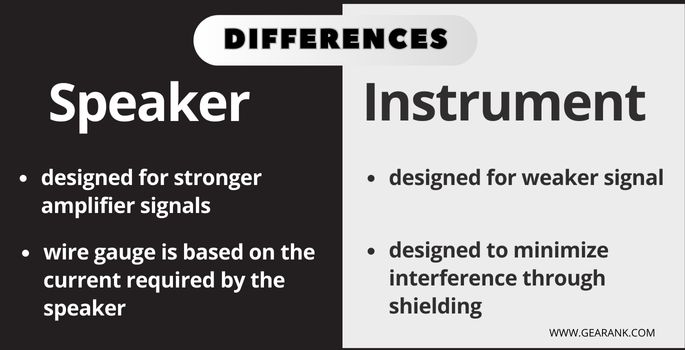
The metal plugs are usually the ¼-inch in diameter type, with two connection points, one for the tip and one for the sleeve. They are mostly made from nickel, gold, and other metal connectors.
Each type's plug joint is unique to accommodate the wires that connect to them.
Some speaker cables don't have plugs. They connect to the speaker, usually by a screw. Some modern speaker cables use specialized plugs to attach to PA speakers.
Note that if your plug features extra sections or a different size, you are working with a different cable type.
What are Speaker Cables?
A speaker wire is designed to carry the strong signal coming from the output of an amplifier, going to a speaker. At the opposite ends of the wire are usually 1/4" plugs or other speaker connector types.
They usually have two independent wires, one red and one black, that connects to the tip and sleeve. Both wires are thick, usually 12 or 14-gauge, and have high capacitance (higher capacity to store electric charge).
This helps them carry the stronger signal generated by amplifiers without losing quality.
This signal is powerful enough to cut through interference, so there's no need for shielding.
But this lack of shielding is the main reason why you should not use a speaker cable for instruments.
You'll end up with a noisy sound, especially in areas with lots of interference.
Even the noise coming from your own amplifier's transformer will interfere with your guitar signal.
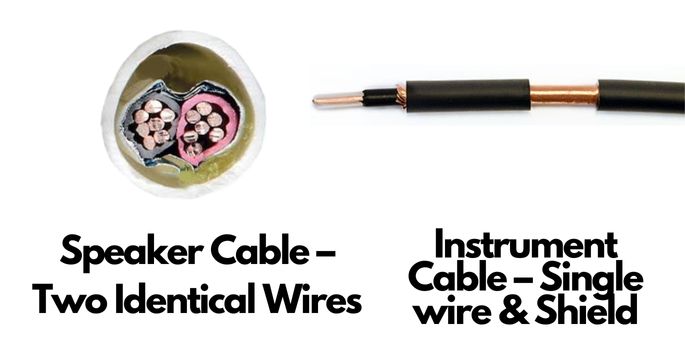
Instrument Cables
These cables connect instruments to an amplifier or mixer. Guitar cables are a popular example of this. They are usually thinner, having smaller wires with low capacitance (lower capability to store electric charge).
Low capacitance allows low voltage to pass without losing sonic details. It is an important cable attribute for those who want their electric guitar signal to be as transparent as possible.
One downside of its weak signal is susceptibility to outside interference. This is the reason why high end cables for instruments come with braided wires or foil for shielding.
Shielding protects the instrument signal from unwanted noise due to outside interference.
Note that an instrument cable will not be able to handle the higher voltage of the signal coming from an amp. So never use one in place of a speaker cable. You will end up damaging your equipment.
The plugs are also designed for instruments, usually 1/4-inch TS (tip-sleeve) plugs or XLR connectors.
How Do You Choose Between a Speaker Cable vs Instrument Cable?
The answer is on the label. Read the label and use your cables - NEVER interchange speaker and instrument cables.
The lack of shielding on cables for speakers can result in unwanted noise. While instrument cables can be damaging when used as substitutes for speaker cables.
This is the reason why we advise against interchanging these two cable types. You don't want to use the wrong type of cable during a performance or when setting up an amplifier or PA system.
If you can't avoid mixing your cables, I recommend labeling them to avoid any untoward incidents.
To achieve optimal quality of sound, get high quality cables that are specific to your purpose. And don't skimp on cables.
If you want to make the most out of your expensive musical instrument, use high quality cables with proper shielding. The same can be said with speaker wires. Use ones that are reliable.
Can You Use Instrument Cables As A Speaker Cable?
The short answer is NEVER. Mixing instrument cables and speaker cabinets is a risky endeavor.
You're not only limiting the performance of your system. You are also exposing your equipment and people to unnecessary and avoidable danger.
Instrument cables work well with low signals like the ones produced by guitar pickups. They can't carry the large current needed to drive a speaker.
If an instrument cable is used to connect an amplifier to a speaker, it won't be able to handle the current and could damage the speaker and even the amp.
The thin signal wire of an instrument cable will fail to provide adequate insulation due to its design.
To stay safe and get optimal performance from your system, it's best to stick with using an instrument cable or speaker cable were needed.
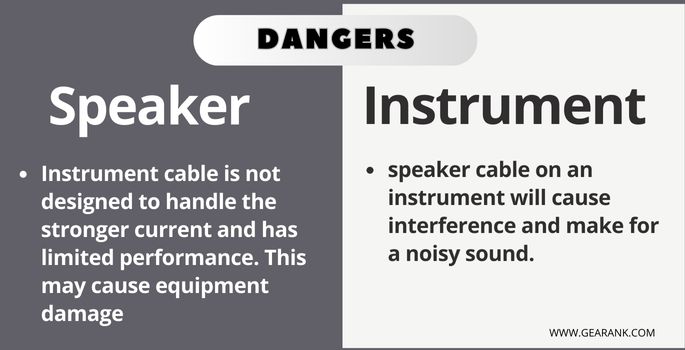
Frequently Asked Questions
Are There Any Consequences If You Use The Wrong Cable?
Using the incorrect type of cable can have severe consequences, especially when considering both qualities of sound and safety.
Don't use a speaker cable, without any shielding, in place of your instrument cable. It can lead to unwanted noise due to interferences from other amplifiers' transformers and speakers.
This is a sure way to ruin your live set. The large amount of electrical current could melt the gauge wire and metal connectors. This can result in damage that is costly to your amp.
When working with cables, you also need to learn about the differences between line level vs instrument level cables.
Do I Need Speaker Cables for Powered PA Speakers?
Powered PA speakers have built-in amplifiers, so the high current transfer happens inside the speaker. This makes speaker cables unnecessary.
Most modern PA systems utilize balanced XLR balanced cables to send audio signal from the mixer to the powered speakers. They connect via XLR or Speakon connectors. And since more and more PA systems are using Powered PA speakers - speaker cables are becoming less relevant. This is also true with Line Array PA System setups.
Speaker cables are relegated to the old method of connecting stand alone amplifiers to passive speakers .
Final Thoughts
Now you know how to distinguish instrument cable and a speaker cable. And you know that each one has its own distinct purpose.
Speaker cables can carry large amounts of power from an amplifier to a speaker. Instrument cables work with weaker signals generated by instruments.
As such, it is important to choose the right type of cable between a speaker cable vs instrument cable - for your setup to ensure optimal performance and safety.




